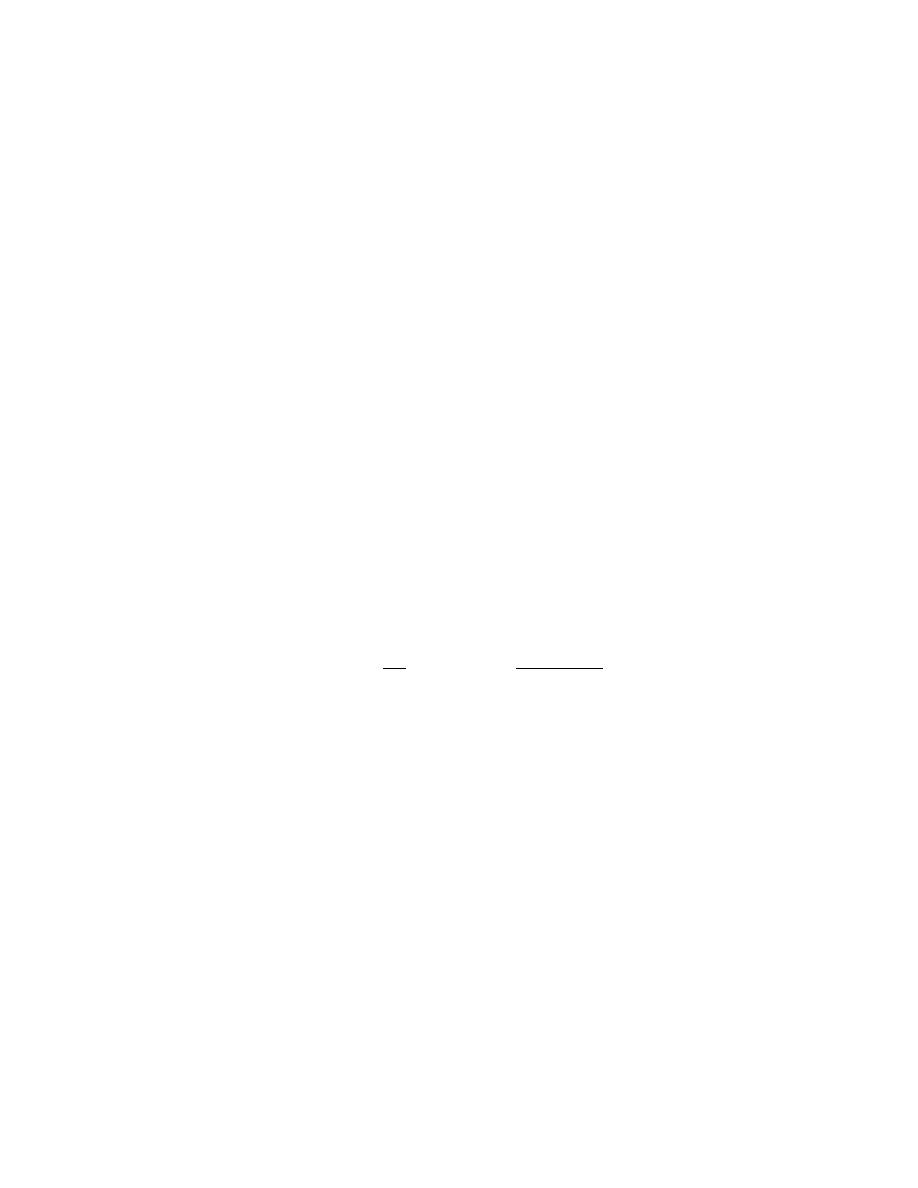
8.2 Irregular Wave Propagation Over a Shoal
The hydraulic model study of Vincent and Briggs (1989) was used to simulate
spectral wave conditions in CGWAVE. The directional spectral wave generator (DSWG)
at the Coastal Engineering Research Center of the U.S. Army Engineers was used to
simulate refraction-diffraction of directionally spread irregular waves over an elliptic shoal.
This study showed that spectral conditions can produce significantly different results than
monochromatic waves. The model domain consists of an elliptic shoal surrounded by a
region of constant depth.
The orientation of the shoal and placement of coastal
boundaries are shown in Figure 11.
The minimum water depth over the shoal is
approximately 0.15 m. The depth around the shoal is a constant 0.4572 m. Wave height
data was collected along the nine sections indicated in Figure 11.
The spectral input to CGWAVE was constructed using a numerically generated,
two-dimensional spectra, E(f,θ) = E(f)D(θ). Expressions used for the energy spectrum,
E(f), and the directional spectrum, D(θ), follow. The energy spectrum is obtained using
the Texel Marsen Arsloe (TMA) spectrum (Bouws et al. 1985, Panchang et al. 1990),
- ( f - f m )2
4
fm
E( f ) = g 2α (2π)
f - 5 exp- 1.25 + (ln γ exp
)
φ f , h)
(
-4
2σ 2 f m
f
2
where α = Phillips'constant
γ = peak enhancement factor (=1 for the Pierson-Moskowitz spectrum)
σ = shape parameter (σ = σa if f < f m and σ = σb if f ≥ f m )
φ f,h) is a function that incorporates depth effects and is approximated by (Hughes 1984)
(
as
0.5( ω )2
for ω h < 1
(
)
2
φ= 1 - 0.5 2 - ω h
for 1 ≤ω h ≤2
1.0
for ω h > 2
where ωh = 2πf(h/g)1/2.
80



 Previous Page
Previous Page
